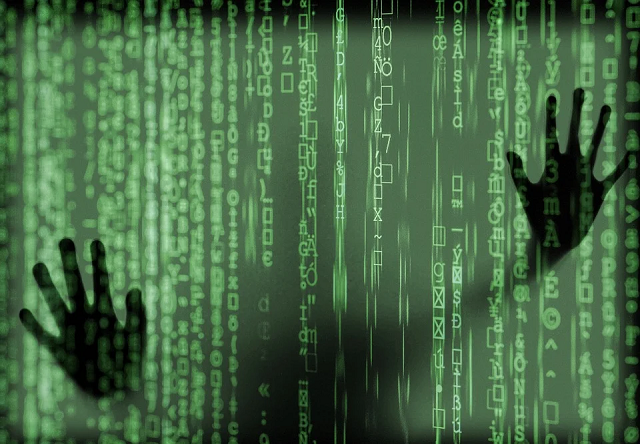How to Prevent Cyberattacks: Top Ways to Protect Your Company
According to 2020 Verizon analysis, 86% of global data breaches are driven by financial benefits. Individuals and organizations must take proactive measures to maintain their cybersecurity now more than ever, as the cost of a cyberattack may easily reach the millions – a sum few can or will pay.
This guide provided by Maryville University‘s Online Bachelor of Science in Cybersecurity program.
Vulnerabilities in cybersecurity
Businesses of all sizes should be aware of the top ten cybersecurity vulnerabilities and take precautions to avoid the significant costs associated with a data breach.
Cybercrime’s exponential growth
Cybercrime is costly. A data breach costs on average $3.86 million, with the yearly worldwide cost of cybercrime predicted to reach $6 trillion by 2021. For example, phishing attempts steal an astounding $17,700 each minute.
While hackers employ a range of strategies, trends suggest which ones they prefer. Six out of ten breaches involve vulnerabilities for which a patch has been developed but not implemented, whereas 45% of reported breaches involve hacking and 94% of malware is distributed via email.
Attacks on the internet of things (IoT) devices tripled in the first half of 2019, while fileless attacks climbed by 265%.
Data breaches affect businesses of all sizes, with 63% of companies reporting that a hardware-level security breach may have compromised their data in the last 12 months. Additionally, 40% of information technology (IT) leaders think the most challenging positions to fill are cybersecurity.
Top ten cybersecurity flaws
companies should know the most common cybersecurity vulnerabilities, which include legacy software, default configuration, lack of encryption, remote access policies (backdoor access), policy and procedure gaps, lack of network segmentation, unpatched security vulnerabilities, unprotected web applications, unrestricted user account access, and unknown programming bugs.
Cyberattacks of various sorts
Though cyber crime methods and strategies continue to evolve, hackers continue to employ seven fundamental types of cyberattacks.
Seven distinct forms of cyberattacks:
A hacker sends a malicious link or email attachment that, when clicked, installs malware software. This software can block access to critical network components, install viruses, worms, trojan, spyware, adware, or other types of destructive software. Those options can access the hard drive to transmit and collect data and disrupt components to render the system inoperable.
Phishing is a technique that includes delivering communication, typically by email, that impersonates a trusted source. The attackers’ objective may be to steal sensitive data, such as usernames and passwords, and to install malware.
When a hacker penetrate a two-party transaction with the goal of filtering and stealing data, this is referred to as a man-in-the-middle (MitM) attack. Unsecured public Wi-Fi and software put on a victim’s device are common entry points for this type of assault.
A denial-of-service attack occurs when a malicious actor floods servers, systems, or networks with traffic to saturate bandwidth and damage the system. Multiple infected devices may be used in a distributed-denial-of-service (DDoS) assault.
SQL injection is the process of injecting malicious code into a server via structured query language (SQL) in order to coerce the server into disclosing sensitive data. To carry off this form of attack, the cybercriminal may enter malicious code into a website’s search box.
A zero-day exploit attack targets a publicly publicized vulnerability prior to implementing a remedy or patch. As a result, organizations that are slow to react may become an easy target for this type of attack.
DNS tunneling occurs when a poor actor sends HTTP and other protocol traffic over the domain name system (DNS) in order to disguise outbound traffic as DNS and conceal data that is typically shared over a secure internet connection; acquire data from a compromised system; and send commands to a compromised system in order to obtain information.
Five emerging cyber threats
Deepfakes and deepfake voice technology make a picture, video, or sound appear to be real by utilizing artificial intelligence technology. This hazard carries the risk of accusing persons of actions or words they did not make.
A similar cybersecurity issue is the creation of a synthetic identity by combining natural and falsified credentials. For instance, the identity may have a real physical address but an unrelated birthday and Social Security number.
Artificial intelligence-powered hacks build systems that mimic human behavior.
When carried out successfully, this type of assault can dupe people into exposing personal or financial information.
Vehicle cyberattacks may involve:
- The theft of personal data.
- Tracking an individual’s location.
- Getting driving history.
- Taking over or disabling safety functions.
Cybercriminals might access the systems of companies using cloud storage to mine cryptocurrencies.
Suggestions for defending oneself from cyberattacks
Individuals and companies can take easy precautions to avoid data breaches and maintain the security of their data.
5 advice for individuals on cybersecurity
The first and most fundamental step toward cybersecurity is creating a unique and unique password for each account. Additionally, users should remember to change their passwords every three months.
Maintaining software updates is critical, as fraudsters frequently use known software defects to gain access to a user’s device.
Cybercriminals may scan through social media posts for information that is frequently used in security questions, such as the name of a pet or the maiden name of a mother. To mitigate this danger, social media users should make their accounts private or refrain from posting important information.
A virtual private network (VPN) is an excellent approach to safeguard sensitive data, particularly while using public Wi-Fi. A VPN encrypts all data transmitted by your device and helps prevent many forms of cyberattacks.
Finally, schools and parents should teach youngsters how to use the internet safely. Children and adolescents should understand the rules and norms for internet use and social media use.
Five cybersecurity tips for businesses
To safeguard corporate data: it is critical to secure hardware, backup and encrypt data, invest in cybersecurity insurance, foster a security-conscious culture, and implement robust cybersecurity software. Taking these actions will help reduce risk and ensuring that the firm continues to operate without interruption.
Taking precautions
Preventative measures are critical for minimizing the danger of a data breach. Individuals and companies may repel hackers and keep their data secure by investing in cybersecurity software, using a VPN, and being aware of typical attack methods.
ources
Cisco, “What Are The Most Common Cyber Attacks”
Compuquip, “Top 9 Cybersecurity Threats And Vulnerabilities”
CSO Online, “Top Cybersecurity Facts, Figures and Statistics”
Cybercrime Magazine, “Cybercrime To Cost The World $10.5 Trillion Annually By 2025”
Dell Technologies, “BIOS Security — The Next Frontier for Endpoint Protection”
Entrepreneur, “Five Ways To Protect Your Company Against Cyber Attacks”
F-Secure, “Attack Landscape: H1 2019”
Norton, “11 Ways to Help Protect Yourself Against Cybercrime”
Norton, “Cyberthreat Trends: 15 Cybersecurity Threats For 2020”
RiskIQ, “The Evil Internet Minute 2019”
ServiceNow, “Costs and Consequences of Gaps in Vulnerability Response”
Verizon, “2019 Data Breach Investigations Report”
Verizon, “2020 Data Breach Investigations Report”
Read more about: CyberSecurity, high tech





